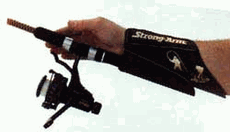Kids on the Block! Happy March 29th!!
Last class period Dr. Navar taught us how to be puppeteers! This was a fun class. Dr. Navar brought in a few of the actual puppets from Kids on the Block, and we were able to learn how to hold and move the puppets. We watched a video about the proper form and movement. This is the official Kids on the Block website: http://www.kotb.com/. The Kids on the Block go around to different schools (mostly elementary) and they teach about different disabilities. They sing songs and allow kids to ask questions to the puppets who have those different disabilities. This is an AWESOME program! I wish that I had it when I was in school :}
Here are some of the puppets!
After Dr. Navar was done with her presentation and we had stopped playing with the puppets. We were asked to get into our groups, brainstorm different kinds of puppets and plan an activity to teach 5-8 year olds about domestic violence, perform a multigeneraltional activity, or reach out to young teens with eating disorders.
There was a large list of the different kinds of puppets: animals, finger, stick, bags, sock, marionettes, shadow, and many more.
My group had the first option of teaching 5-8 year olds about domestic violence. We decided that for this topic it might be better to have simple puppets so as not to distract the children because this is a very important topic to talk about. We thought that the puppets should come together at recess and one would be really tired because he/she stayed up all night because his/her parents were fighting all night. The other puppet would say that his parents never did that; he/she would mention that they did fight sometimes, but one or both would always appologise after. Then we thought that either another "teacher" puppet would come up and start talking about what is right and what can be done or just one of the childrens real teachers could.
As a class we also talked about how puppets can be a very good way to reach out to patients who may have been sexually abused because the patient might not feel comfortable talking face to face with another person about his or her experience. They may, however, open up more to a puppet.
Thanks a lot!
~Sarah











